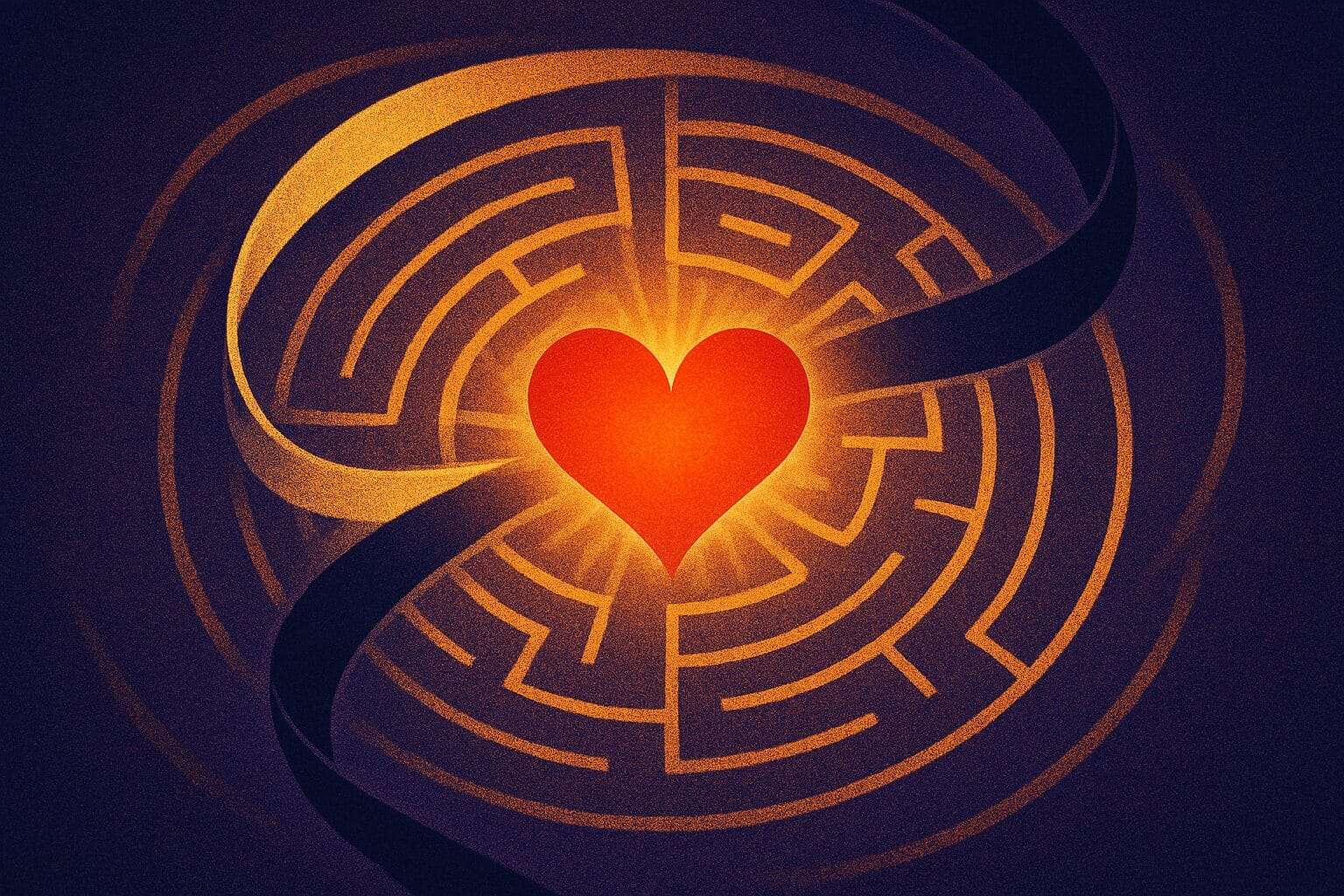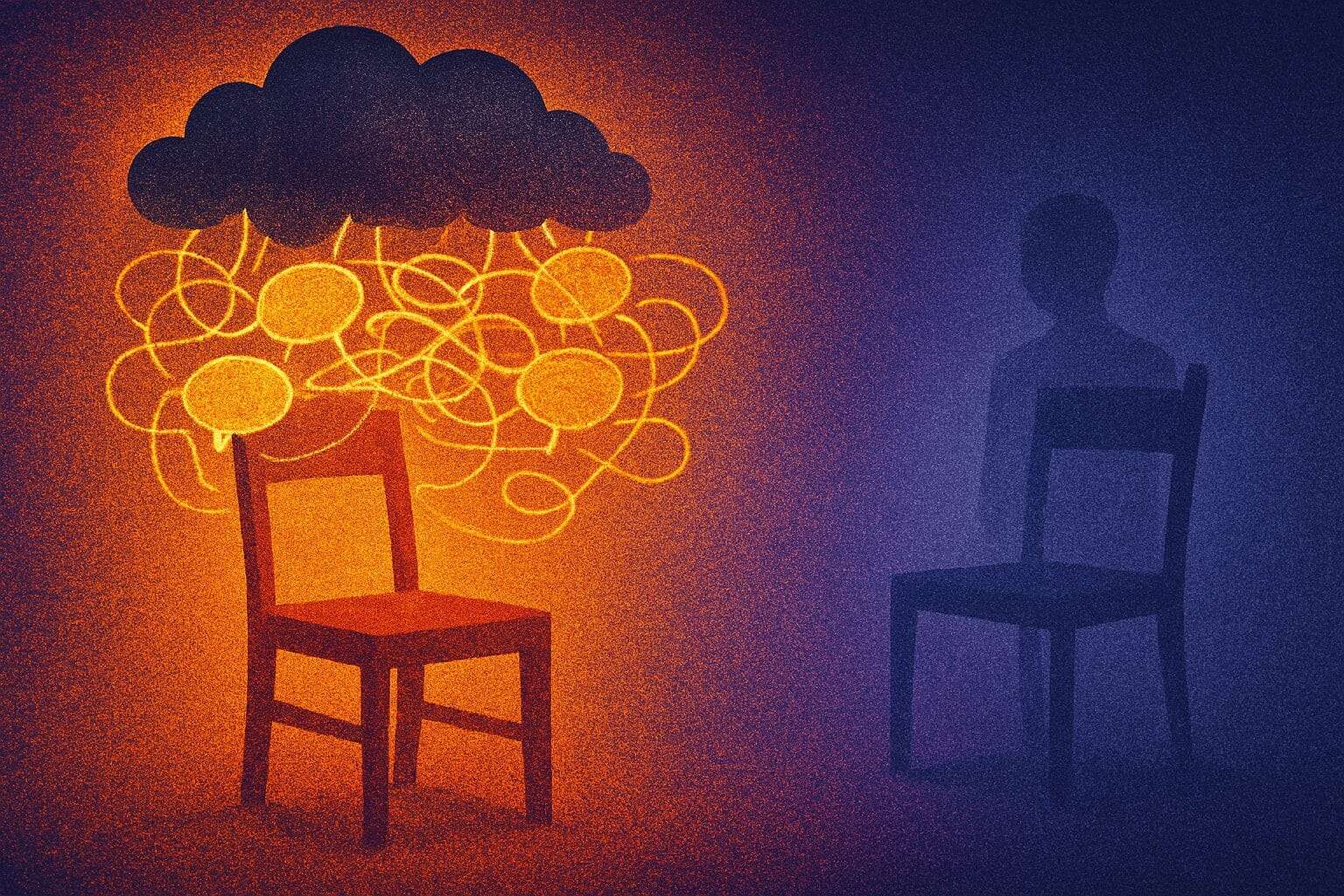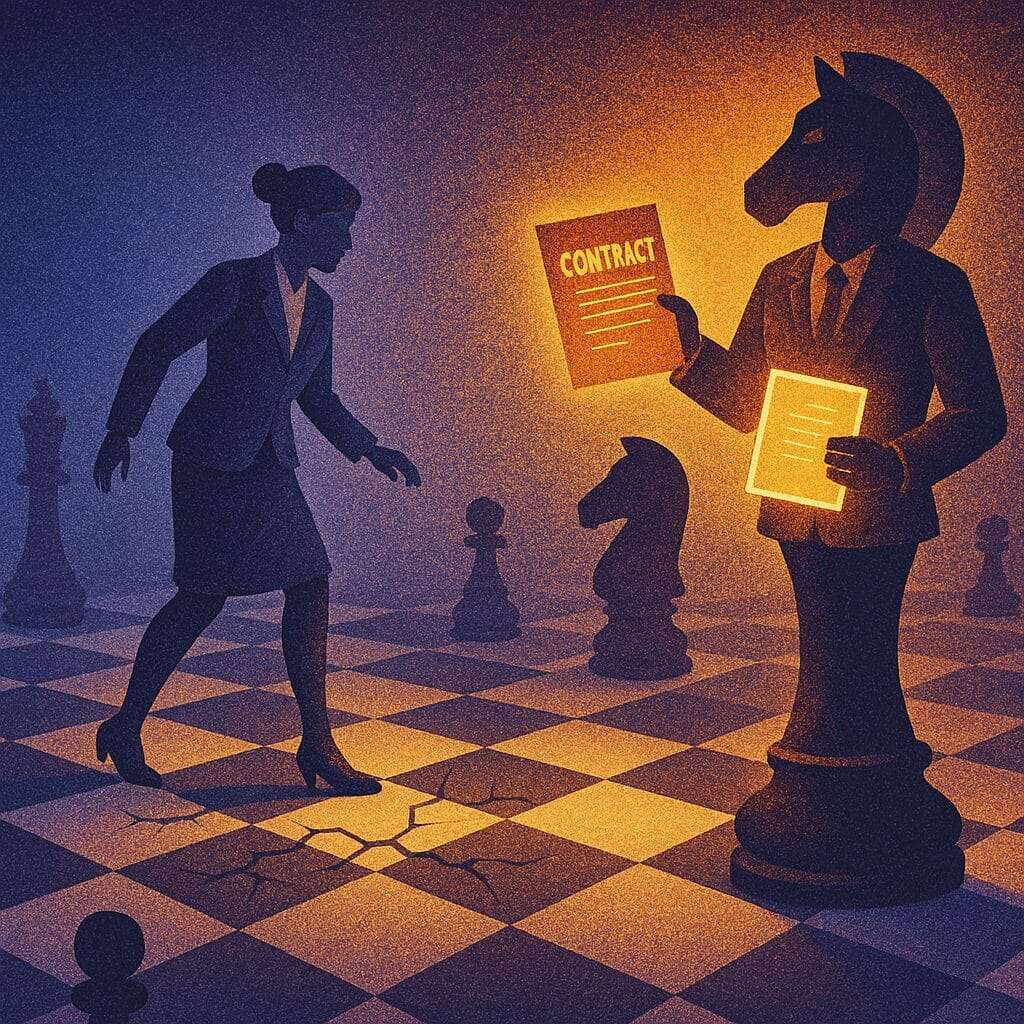
Why It’s So Hard to Leave the Wrong People (Even When You Want To)
- Updated: July 7, 2025
💛 Ready to stop performing and start healing? This piece will help you get clear—and get free.
Unhealthy relationship patterns are sneaky.
They don’t show up with red flags waving.
Oh, that would be too obvious.
Instead, they show up as:
- “Just being patient.”
- “Giving them another chance.” — trying to be charitable.
- “Maybe I’m overreacting.” — downplaying what your eyes see and what your gut feels.
But deep down, you feel it.
You’re not being loved—you’re being used.
You’re not in a relationship—you’re stuck in a performance.
I’m Denise G. Lee, a healing and leadership coach.
And if you’ve ever felt like you’re bending over backwards just to keep the peace while someone else chips away at your sanity—this is for you.
This article breaks down:
- Why we stay in unhealthy dynamics
- What emotional need they secretly fulfill
- And how to stop playing roles you never signed up for
You’ll walk away seeing your patterns more clearly—and knowing how to change them.
Let’s get into it.
Your Healthy Relationships Toolkit
Why This Matters (Especially If You’re a Leader)
Unhealthy relationship patterns don’t just leave you emotionally bruised.

Unhealthy relationship patterns don’t just leave you emotionally bruised—
they come with a price tag.
And it’s steep.
They cost you:
- Money — bad decisions, poor hires, misplaced loyalty
- Sanity — spinning over conversations, overexplaining, second-guessing
- Clarity — because when you’re always reacting, you can’t lead well
If you’re emotionally struggling but professionally successful, this is the invisible weight pulling down your leadership—and your business.
And let’s be real:
How can you build a legacy when you’re emotionally drowning in manipulative quicksand?
I’ve heard too many stories of leaders trying to accommodate, rationalize, ignore, dismiss—or flat-out deny—the fact that they have people on payroll who are quietly draining their time, energy, and patience.
Let’s talk about Bryan.
He’s fictional—but far too familiar.
Bryan’s the marketing manager who misses deadlines, stirs up drama in every meeting, and still gets a pass because “he’s going through a lot.”
So you justify it:
“He has potential.”
“He’s under pressure.”
“He’s not that bad.”
Meanwhile, your best people are getting resentful.
And you’re exhausted—micromanaging Bryan, cleaning up his messes, and quietly wondering if you’re the problem.
The moment you start managing someone’s emotions more than their responsibilities, you’ve lost clarity.
Denise G Lee Tweet
According to Gallup’s 2024 State of the Global Workplace report, disengaged or toxic employees can cost a company up to 18% of their annual salary in lost productivity. Globally, disengagement drains $8.9 trillion from the economy each year—9% of global GDP.
The toll is personal too:
- 41% of employees globally report high daily stress
- Only 31% of workers under 35 say they’re thriving
And here’s the truth:
These dynamics always trace back to one thing—unresolved emotional business.
We’ll get into that next.
Scripted to Stay: The Psychology Behind Unhealthy Relationship Patterns
Tolerating a toxic playmate—what I sometimes call a “human punching bag”—often reflects deeper psychological patterns that go way beyond logistics or loneliness.

I still remember the first time I heard Fantasia’s “Free Yourself.”
Her voice—shrill, raw, real—cut straight through.
“If you’re unhappy, you are free to move on.”
That one line felt like a truth bomb wrapped in gospel grit. It wasn’t just a breakup anthem—it was a call to reclaim your dignity. To break free from something you knew was wrong, even if you still couldn’t walk away.
But for some of us, we don’t recognize it as unhealthy—at least not right away.
Sometimes, not even when it’s physically, spiritually, or emotionally unsafe.
And let me be clear: I’m not writing this from a pedestal. I’ve played those roles too.
I’ll never forget one of my brothers pulling me aside during a situationship and saying, “He’s treating you so bad.”
And I didn’t know. I truly didn’t.
I had become so numb to the digs, the dismissals, the constant criticisms that I thought it was normal. That this was what romantic relationships looked like.
And that’s the thing—unhealthy relationship patterns almost never show up out of nowhere.
They have an origin story.
Let’s unpack what might be going on underneath the surface:
1. Familiarity Feels Safer Than Freedom
Toxic dynamics can feel weirdly familiar, even if they’re painful.
If you grew up around criticism, emotional neglect, or controlling behavior, your nervous system may associate chaos with “home.”
Freedom feels foreign. Pain feels predictable.
2. Subconscious Role Playing
Transactional Analysis would call this a psychological game.
We tolerate—or even attract—certain dynamics because they give us a scripted role to play: Victim, Persecutor, or Rescuer.
The image below visualizes how it goes down in the real world.
It’s not healthy, but it’s predictable. And predictability can feel like safety when you’re wired for survival.

3. Shame and Identity
Somewhere deep inside, we may believe, “This is the best I deserve.”
When shame hardens into identity, we unconsciously keep people around who reinforce it.
Because if they’re mistreating you and you stay… doesn’t that prove the shame was right?
4. Codependent Control
This is the flip side.
When you’re the “strong one,” the “fixer,” the one who puts up with everything—it gives you a sense of power.
Even if you’re being mistreated, you might feel superior, needed, or morally righteous.
“Look how loyal I am.”
“They need me.”
“At least I’m not like them.”
5. Fear of Solitude or Change
Leaving requires facing the unknown.
And for many people, staying in a harmful relationship feels easier than grieving the fantasy of what could have been.
Even if you’re hurting, you might cling to the devil you know just to avoid the silence, the shift, or the identity crisis that comes with letting go.
How Pop Culture Teaches Unhealthy Relationships Patterns
We see unhealthy relationship patterns everywhere.
Movies. Songs. Reality TV.
It’s full of scorned lovers, broken hearts, grand gestures, and shattered dreams—often all in the same scene.

Just the other day, I was driving and listening to SiriusXM’s The Pulse when I heard Taylor Swift crooning something like,
“Did you have to put the knife in my life…”
(Sorry, Swifties—I don’t know the exact lyric, but you get the point.)
For many celebrities and entertainers, these patterns aren’t just juicy plot lines to sell a book or movie.
They’re real. Public. Repetitive.
Let’s take a look:
J.Lo — always reinventing love but rarely alone
Elizabeth Taylor — seven husbands and a legacy of intensity
Rupert Murdoch — rotating wives, rotating power moves
Khloé Kardashian — publicly loyal, privately betrayed—again and again
What’s the common thread?
Not love.
Not bad luck.
Scripted, unhealthy relationship patterns.
And maybe you’re thinking,
“Okay, but what does that have to do with me, my life, or my business?”
Great question.
It all comes down to something most people overlook:
mirror neurons and habituation.
Let’s unpack that next.
The Science Behind Why You Stay (Even When It Hurts)
You’re not weak.
You’re wired.
That high-conflict relationship that leaves you spinning? It’s not just toxic—it’s chemically addictive.

Let’s break it down:
-
Adrenaline & Norepinephrine – High-conflict relationships trigger your body’s stress-response chemicals. The chaos keeps you on edge, and oddly, hooked.
-
Mirror Neurons – You mirror what you were raised in. Even if you hated it, it still feels familiar.
-
Trauma Bonding – You bond through pain, not peace. Through drama, not depth.
And I get it—this isn’t easy to hear. Especially if you’re in it right now.
So unclench your jaw. Drop your shoulders. Breathe.
We’re going to ride this one out together.
Maybe you’re thinking, “Was it really that bad?”
Or maybe your brain keeps replaying the good moments—the dopamine hits, the “but we had fun once” montage.
This is where the biology kicks in.
If you want the deep dive on the hormonal impact?
Read The Biology of Codependency. It’s the big sister to this article—and it will hit different now that you’ve made it this far.
Here’s the short version:
🧠 Cortisol – The Stress Hormone
Your body isn’t built to be in crisis 24/7. But when you’re constantly in fight-or-flight with a toxic partner, cortisol surges.
And guess what? Your nervous system can adapt to that chaos and start craving it.
This is why the relationship feels “boring” when there’s no drama. You’ve normalized emotional warfare.
🧪 Oxytocin – The Bonding Trap
Nicknamed the “love hormone,” oxytocin is released during sex, touch, and even emotional vulnerability.
But here’s the kicker: it doesn’t discriminate. You can bond just as tightly to an abusive or manipulative person as you would to someone kind and stable.
In fact, oxytocin is why you might miss someone who hurt you. Not because of love—but because of chemical imprinting.
🎢 Dopamine – The Pleasure Loop
Dopamine makes you chase the highs in the relationship while minimizing the lows.
You become addicted to the good moments—even if they’re rare. You hope if you just do better, love harder, explain more clearly… you’ll get that hit again.
Sound familiar?
🔁 Serotonin – The Obsession Fuel
When your serotonin is dysregulated (often because of chronic stress or anxiety), you can’t stop thinking about them.
You fixate. Then obsess. Finally, you stalk their socials at 1 a.m.
Not because you’re desperate. Because your brain is chemically looping.
And if you’re wondering how this ties into your work, your leadership, or your business—oh, it does.
You don’t leave these patterns at home. They shape how you manage people, handle conflict, and trust your own judgment.
This isn’t just relationship stuff. It’s life stuff.
Next up, I’ll walk you through how to reset your system—not with mantras or wishful thinking, but with grounded strategies that help you actually break free.
I know this might feel a little uncomfortable—especially if you’re sitting in it right now. So, unclench your jaw (or your butt cheeks), and stay with me. We’re riding this wave together.
And if part of you is thinking, “Was it really that bad?”
That’s exactly why we’re about to walk through some fictional—but very real-feeling—scenarios.
The Emotional Dumping Ground: Personal Example of Unhealthy Relationship Pattern
Scenario:
Tasha and Renée have been friends since their early 20s—think girls’ nights, inside jokes, and “I’ll be there no matter what” energy. But over time, the dynamic shifted.
These days, their conversations sound more like therapy sessions—with Tasha doing all the talking. She vents nonstop: about her job, her on-again-off-again situationship, her mom, her latest health spiral.
Meanwhile, Renée listens. Nods. Offers advice. Absorbs it all like a sponge.
Every time Renée tries to bring up her own life—her work burnout, her dating frustration, even her dad’s health scare—Tasha either changes the subject or steamrolls with, “You think that’s bad? Wait till you hear what happened to me.”
And when Renée finally tries to set a boundary or create space, Tasha texts things like:
“You’re literally the only person I can talk to.”
“I guess I’m too much for everyone now.”
Suddenly Renée finds herself caught between guilt, exhaustion, and the fear that saying “no” will cost her the friendship.

Why Renée Tolerates It:
-
Scripted Role: She’s always been “the strong one,” the empath, the steady shoulder. Speaking up feels selfish—or worse, mean.
-
Fear of Conflict: She dreads rocking the boat. She doesn’t want to be accused of being cold or ungrateful.
-
Emotional Payout: Deep down, being the stable one gives her a quiet sense of moral superiority—“At least I’m not as messy as her.”
Tasha’s Payout (the emotional dumper):
-
Avoids Accountability: As long as Renée stays in listener mode, Tasha never has to reflect or change.
-
Control Through Guilt: Guilt keeps Renée close. It’s not healthy, but it’s effective.
-
Faux Intimacy: Tasha mistakes oversharing for connection. It feels deep—but it’s all one-sided.
Professional Example of An Unhealthy Relationship
Scenario:
Jordan runs a fast-growing creative agency. She built it from the ground up—hiring with her gut, leading with loyalty, and treating her team like family.
Eli was one of her early hires. Back then, he was electric—sharp, creative, always one step ahead. He brought in big clients, wowed them, and made Jordan feel like she had struck gold.
But somewhere along the way, Eli shifted.
Deadlines started slipping. Emails went unanswered. He began acting like feedback was an attack—and any attempt at accountability was met with veiled legal threats or passive-aggressive comments about “talking to HR” or “knowing his rights.”
Still, when he’s on, he’s brilliant. He can land a pitch like nobody else. But the inconsistency, moodiness, and defensiveness are taking a toll on the entire team.
Jordan finds herself walking on eggshells—afraid to say too much, too directly.
She tells herself:
“He’s going through a lot.”
“Maybe I haven’t been clear enough.”
“I just need to hang on until the next project wraps.”
But deep down, she knows:
The team feels it. Morale is tanking. And she’s losing time, trust, and peace trying to manage someone who no longer wants to be managed.

Why Jordan Tolerates It:
-
Loyalty Blindness: He helped her build the company. Letting go feels like betrayal.
-
Avoidance of Conflict: She’s scared that one wrong move will trigger a legal threat or internal HR drama.
-
Payout: She tells herself keeping him is the “safe” option—that his occasional brilliance justifies the chaos.
Eli’s Payout (the employee playing defense):
-
Avoids Growth: He knows Jordan won’t push too hard, so he coasts.
-
Wields Past Glory: He uses his early wins as a shield to dodge accountability.
-
Maintains Control: Threatening escalation keeps everyone at bay. He gets to dictate the terms—without showing up fully. Eli probably learned this type of controlling behavior in childhood.
The Bigger Picture
Whether personal or professional, these kinds of relationships don’t just drain your energy—they erode your clarity.
If you’ve ever found yourself managing someone’s moods more than their responsibilities, or justifying bad behavior because “they used to be great,” you’re not alone.
And the cost?
Your peace, your power, and your ability to lead.
If you’re reading this and thinking, “I don’t want to keep doing this,”
Good. You don’t have to.
In the next section, we’ll walk through exactly how to break the unhealthy relationship pattern —without losing your values, your voice, or your mind.

How to Break Unhealthy Relationship Patterns
If you’ve made it this far, you already know:
Awareness isn’t enough.
You can know it’s dysfunctional. You can see the cycle.
But leaving the pattern? That takes more than logic. It takes unhooking the emotional and chemical payout keeping you stuck.
You’re not broken.
You’re bonded—to a script, a sensation, or a survival strategy.
But good news? Scripts can be rewritten. Bonds can be broken. You can get free.
Here’s how:

1. Identify the Role You’re Playing (Victim, Persecutor, Enabler)
No shame—just honesty.
Are you the fixer, the one who tolerates too much, or the one who punishes when you’re hurt?
Every pattern has a part. Spot yours.
2. Get Honest About the Emotional Payout
If you’re staying, you’re getting something out of it.
Maybe it’s control. Perhaps it’s validation. Or is it avoiding loneliness?
What are you emotionally feeding on—even if it’s costing you your peace?
3. Set Clear Boundaries Without Explaining
Boundaries are not threats or lectures. They’re facts.
You don’t need to over-explain or win them over.
As I said in Maintaining Personal Boundaries: Why They Matter More Than Ever:
“Boundaries aren’t rejection. They’re clarity.”
4. Grieve the Fantasy
They’re not going to change. You don’t need them to.
Letting go doesn’t make you heartless—it makes you honest.
You’re not leaving love. You’re leaving the illusion of love.
And grieving that illusion? That’s the hardest part—and the most healing.
5. Rewire Your Nervous System With Boringly Safe Relationships
Yes—boring.
Safe. Mutual. Non-reactive.
As I explain in Why You Stay: The Hormonal Science Behind Codependency, your brain gets addicted to adrenaline and cortisol from chaotic love.
Healing feels awkward at first—because peace never felt like home.
But your nervous system can learn something new.
What to Say to a Toxic Playmate
If you need words to exit the pattern, try one of these:
“I’m not available for this dynamic anymore.”
“This isn’t working for me.”
“I’m done explaining myself.”
“I want peace more than I want your approval.”
Notice all of these responses do not require to you to:
- yell and scream to anyone who would listen
- tear up everything that reminds you of them
- produce a mic drop-worthy speech
- post all about it on social media
But, they do require that you are done with the:
- drama
- games
- confusion
And when you are?
That’s when the script finally breaks.
💡 Need more support navigating these dynamics—especially when they’re tied to your past?
You’ll love How to Break Toxic Romantic Relationship Patterns (Without Repeating the Past). It unpacks how childhood scripts shape your adult love life, and why business owners especially need to deal with unresolved emotional baggage before it hijacks their leadership.
The image below sums up my ideas.
Next, I’ll share my final thoughts—no fluff, just the truth about what it really takes to stay free once the pattern is broken.

Let’s Clear a Few Things Up: Relationship Pattern FAQ
If you feel like you’re constantly managing someone’s emotions, doubting your worth, or justifying behavior that drains you—it’s not healthy. Patterns don’t need to be dramatic to be damaging. Pay attention to what you’re tolerating in the name of “love,” “loyalty,” or “keeping the peace.”
Your body can bond to chaos, not just kindness. Hormones like oxytocin and dopamine don’t check character—they respond to intensity. Missing them doesn’t mean they were good for you. It means your system got used to the emotional rollercoaster.
Loyalty is rooted in mutual respect. Codependency is when your sense of self-worth depends on fixing, saving, or tolerating someone else. One uplifts both people. The other keeps you stuck.
Try: “I care about you, but I’m not available for this dynamic anymore.”
You don’t owe a dramatic speech. You owe yourself peace.
You may not be able to walk away, but you can step back. Boundaries aren’t just about distance—they’re about emotional clarity. Limit access to your time, energy, and vulnerability, even if contact remains.
Final Thoughts
You’re not broken.
You’re just scripted.
And scripts? They can be rewritten.
This isn’t about blaming yourself for the roles you’ve played.
It’s about realizing you don’t have to keep auditioning for a part that’s wounding you.
The deeper work isn’t in cutting people off—it’s in quitting the roles you never asked to play in the first place.
Roles like fixer. Peacekeeper. Performer. Martyr.
Those identities may have kept you safe…
but they’re not required for your healing.
So the next time someone mistreats you and asks,
“If I’m so bad, why are you still here?”
Let your clarity answer for you.
You’re not. Not anymore.
If you’re ready to stop performing and start healing—for real—I’d be honored to support you.
💛 Work with me, Denise G. Lee – Together, we’ll untangle the deeper patterns holding you back and create clear, practical strategies that match you. No hype. No formulas. Just honest, personalized support.
👉 Explore working together
🎙️ Want more real talk like this?
Listen to my podcast for unfiltered conversations on emotional growth, leadership, and the truth about healing in business and life.
👉 Introverted Entrepreneur – wherever you stream
💌 Got thoughts or questions about this article?
I’d love to hear from you.
👉 Write me a note
And just in case no one’s reminded you lately:
Leadership isn’t about being perfect.
It’s about being present. Being willing.
Showing up with your scars, not just your strengths.
That’s what makes it powerful.
That’s what makes it real.





